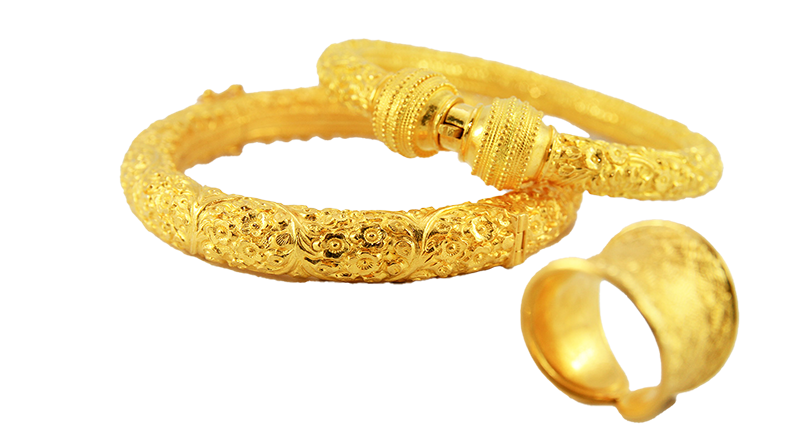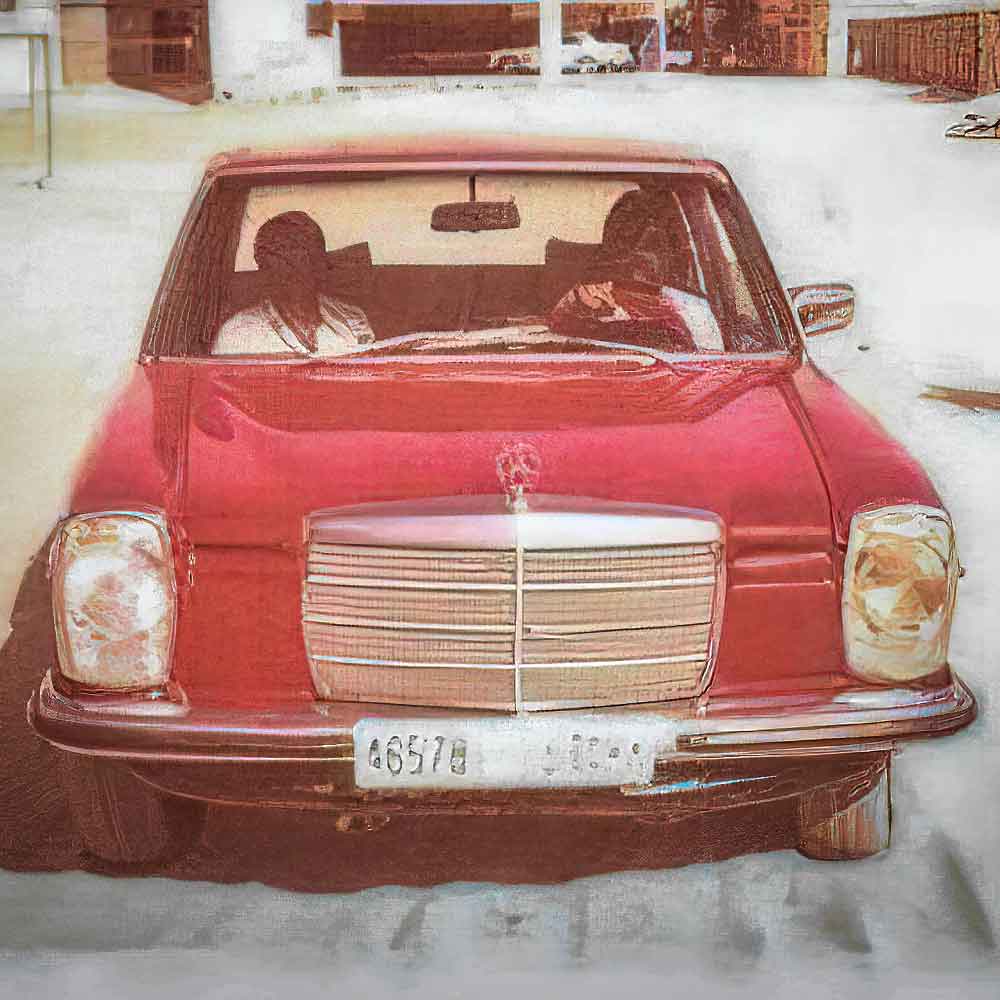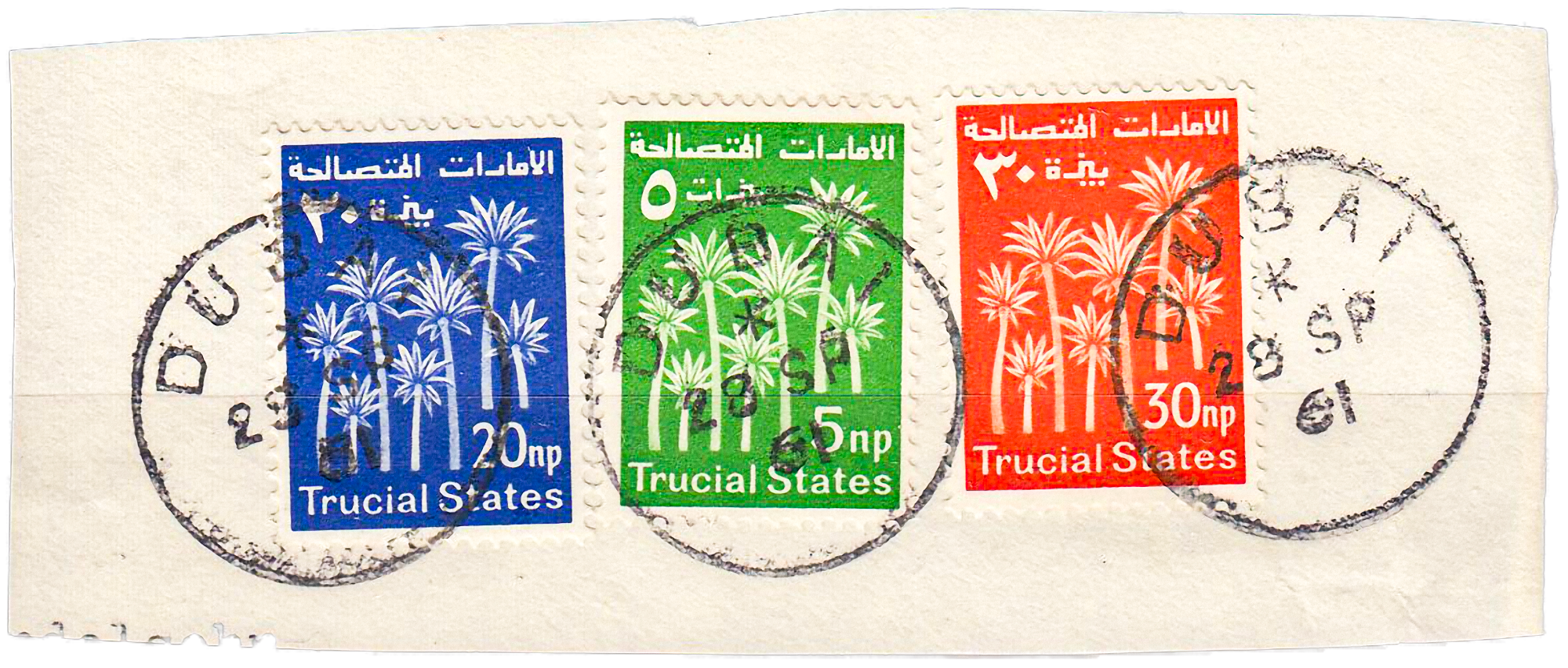Suresh L. Shaholia - Jeweller
Suresh's father and his family left India and arrived in Dubai in 1961
His father traded in gold jewelry and one of the earliest Expatriate Gold Traders in Dubai
Suresh was nine years old when the family arrived in Dubai
He went to school with Sheikh Rashid. They formed a lasting close bond.
Shaholias supplied gold to Members of Dubai's Royal Family.

Suresh L. Shaholia shows old passports at the family’s shop in Dubai Gold Souq Dubai
Born in 1952, Shaholia first arrived in the Trucial States when he was nine, having sailed with his parents for a week in an old ship from Bombay.
Historically, Shaholia's family had traded in jewellery and came to Dubai to continue extend their business and profession in Dubai.
“At that time, I didn’t have a separate passport. My name was entered in my mother’s passport” Shaholia explained.
Shaholia's father, Laxmichand Mohanlal Shaholia, came from the western Indian State of Gujarat. In 1948, he sailed to Dubai in a Dhow to set up a jewellery shop by Dubai Creek.
“We had the first jewellery shop in the abra market of Bur Dubai. They used to call it Chapra Market because of its thatched roof” Shaholia recalls.
The shop was a few kilometres away from Shaholia's house in Al Fahidi neighbourhood where some of Dubai's Royal Family Members also lived.

Image Credit: Atiq Ur Rehman/Gulf News
“I was only a child when I first came here in 1961, climbing aboard an old ship that sailed nearly a week to bring us from Porbandar, Gujarat to Dubai,” he recalls. “We had paid Rs1,200 to buy us passage; my father had a mere Rs50 when he set foot in this country in the 1950s.”
Bastakia Schooling
He was sent to the first school run by the Indian teacher couple K.S. Varkey and Mariamma Varkey in Bastakia.
“I was one of the first students of their school. Madam Varkey taught me,” said Shaholia. Even as a student, Shaholia had to play another role. Second among six brothers, he had to support his father's gold business in his own way. Shaholia carried gold ornaments to or from the shop on his way to the tutorial at the Varkeys — forerunner of Our Own English High School established in 1968.
Shaholia discontinued his studies and became fully involved in his father's gold business.
Shaholia explains...
“My father was very popular in the market. Wearing a dhoti, he was referred to as Gandhi in those days. People also called him Lakku. Many people would buy gold and silver ornaments from my father's jewellery shop. Women customers from the royal families would shortlist the designs they liked then I carried those jewellery items to Zabeel Palace" Shaholia said. “At Zabeel Palace, they would finalise their selection then I'd take the rest of the gold back to the shop. We also brougt fruits and vegetables from India which gave to the royal family members. When we sent them boxes of fruits and vegetables, they sent us fragrant manjack fruits which we used for making pickles.”
Where Shaholia's father’s shop once existed is now Souq Al Kabeer. “That was the only souq that existed those days. My father used to interact with all prominent Indian and Emirati businessmen of those times. All of them had a role in the early days of development in Dubai,” Shaholia said.“Dubai Creek was only about 7km long and only two rowing abras to cross the Creek. It was only after the dredging that motorised boats came to Dubai Creek."
Growing Family!
Shaholia family grew in numbers over the years and now numbers over 75 in different Emirates.
Except for those in the third generation, most are in the jewellery business.
“Because of their experience and contacts, my father and uncles were consulted when the gold souqs in Dubai and Sharjah were initially designed,” said Shaholia whose shop eventually branched out to Sharjah and Fujairah.
He was first sent to Sharjah to learn how to make gold ornaments in his uncle’s shop.
“That was in 1971. My father had a Mercedes car. But I had to go to Sharjah on a motorcycle,” said Shaholia who still treasures his motorcycle’s licence and his second passport with the stamp of the Trucial States.

Shaholia's Father's Treasured Mercedes
Many people would buy gold and silver ornaments from their jewellery shop.
Women customers from the royal families would shortlist the designs they liked.
Shaholia would carry those jewellery items to Zabeel Palace, he said.
At the palace, theLadies would finalise their selection and I would take the rest of the gold back to the shop.
We also used to gift fruits and vegetables which we would bring in from India to the royal family members.
When we send these boxes of fruits and vegetables to them. IN return, they send us back the fragrant manjack fruits which we used for making pickles.
Staying at Home
Shaholia said he has never travelled to any country other than his home country. His visits to India have been rare.
“Because of the business, we brothers took turns for our vacations. We would go to India only once in five or six years.
Shaholia is amazed at the way the gold trade and other sectors in Dubai and the UAE have grown in a few decades. He said everyone here has grown with this country. Shaholia has not been able to keep pace with the gold trade in Dubai.
“I am old now. So, I mostly stay in my Fujairah house and look after the business there and visit Sharjah and Dubai occasionally,” he said.
Dubai As It Used To Be
With Trade Licence Number 7, Shaholia’s family business was one of the first to launch an enterprise in Dubai.
Back in those days, we didn’t have these concrete buildings that surround us today.
What we had were ramshackle shops that were set up on the banks of Dubai Creek, close to the market now called Souk Al Kabeer.
The market was occupied mainly by Indians and Iranians. A fine distinction was always maintained between the two groups. The former handled mostly clothes, jewellery and the like, while the latter dealt mostly in spices and such sort.
We all helped each other when times were tough; it was a very close-knit community back then.
Life back then was as a simple as it gets. We would eagerly wait for the boat to arrive every week, hopefully bringing with it vegetables to allow us to have a meal without canned beans.
Formation of the UAE was still a decade away. We didn’t even have basic necessities such as fresh water and electricity. If we were lucky, donkey caravans would bring drinking water from the mountains every week and we would stock up for a week; electricity was still a dream that was fulfilled in the late 1960s” he said.




